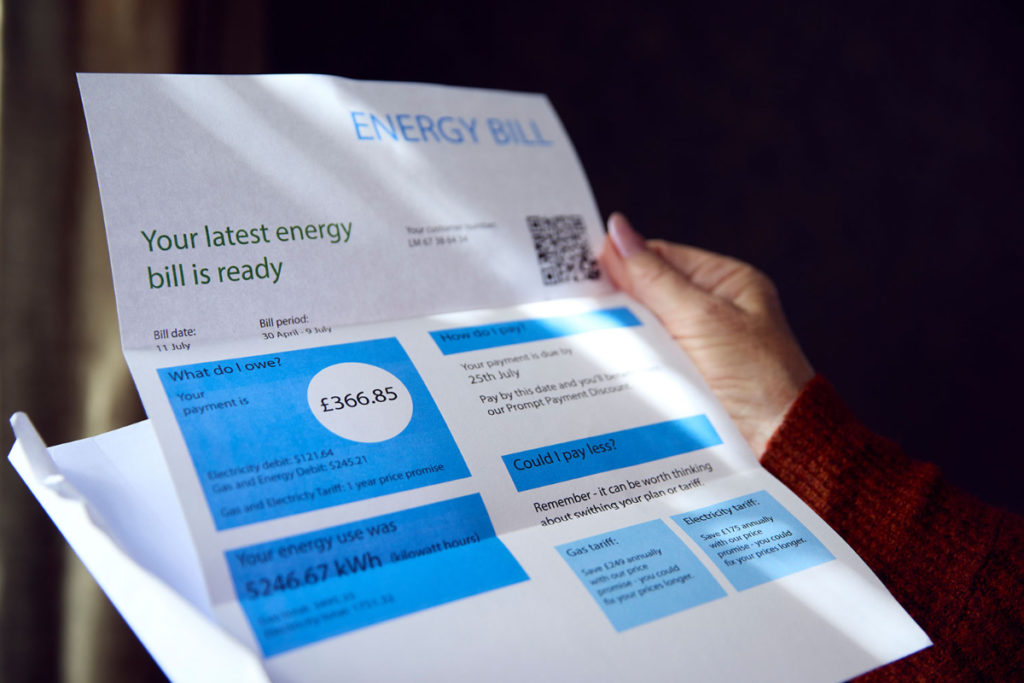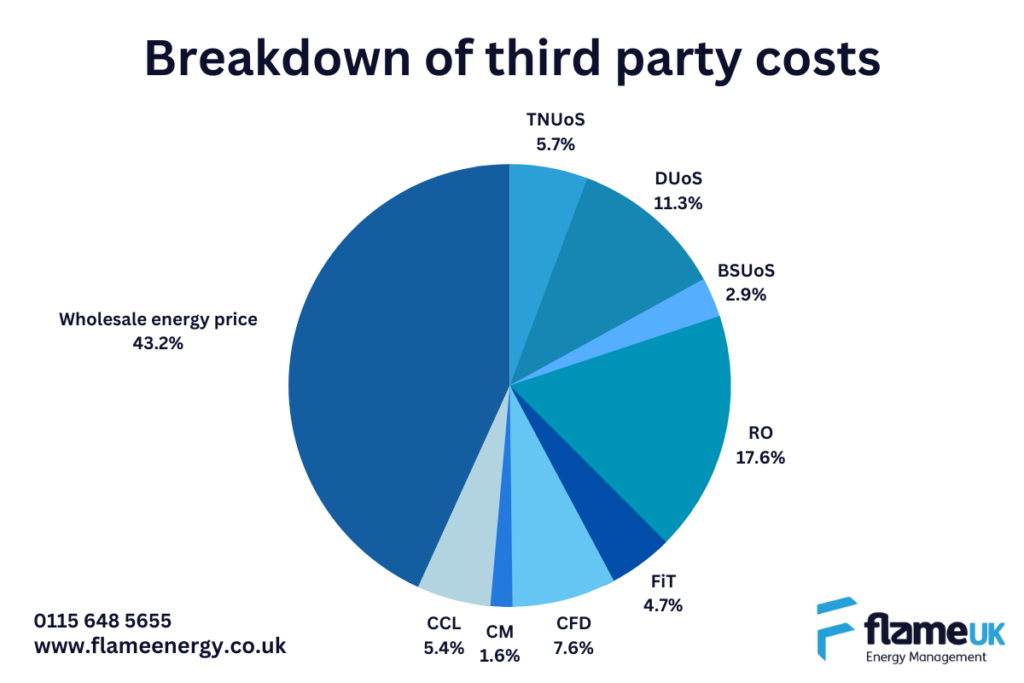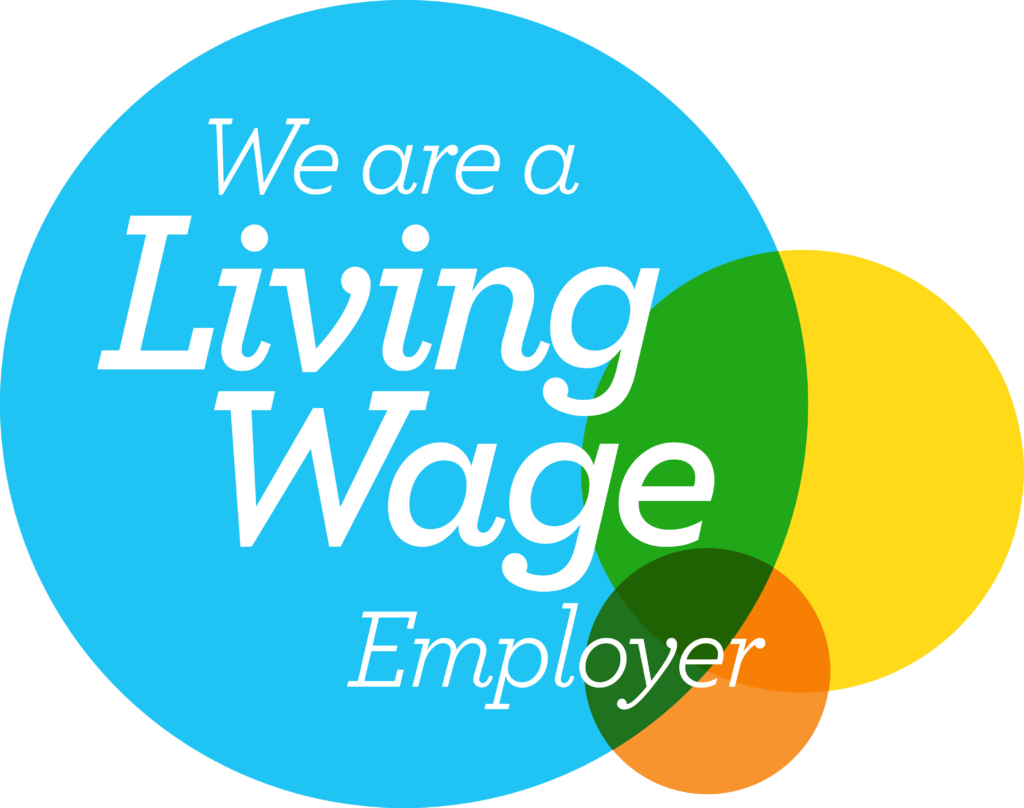NEWS
Third Party Costs: The Ultimate Breakdown

Understanding your energy bill can be a bit confusing. You probably will have seen different third-party costs included on your bills. But what are they and what does each one mean? Here’s Flame Energy’s breakdown of the different third-party costs you’re likely to see and how much they contribute to your total bill.
What are third party costs?
If you’ve had a look at your electricity bill recently, you will have seen that around 60% of your bill is made up of third-party costs (TPCs). Otherwise known as non-commodity costs, TPCs contain the multiple different costs that an energy supplier incurs. They use these as a way to pass their costs onto the consumer.
Over the years, there’s been a considerable increase to these costs. A decade ago, third party costs made up around 30% of the average overall electricity bill. Now, these costs make up around 60%. With energy prices at an all time high, it’s even more crucial to understand third party costs and how to mitigate them.
Breakdown of the different third party costs
Network costs
- TNUoS (Transmission Network Use of Systems) – This is a charge levied by the Network Operator. It covers the cost of delivering electricity from power stations to the Distribution Network. In addition to this, it covers the maintenance and development of the Transmission Network. Contribution to total cost: 5.7%
- DUoS (Distribution Use of System) – This charge covers the cost of distributing electricity over the local Distribution Network to your site. Similar to the previous TPC, it also covers the maintenance and ongoing development of the Distribution Network. Contribution to total cost: 11.3%
- BSUoS (Balancing Services Use of System) – This third-party cost is in place to make sure that there’s enough generation to cover the demand. Contribution to total cost: 2.9%

Environment costs
- RO (Renewable Obligation) – The RO came into place in 2002 across England, Wales and Scotland. This was later followed by Northern Ireland in 2005. This third-party cost was the main support framework to incentivise the construction of large-scale renewable electricity in the UK. The scheme closed to new entrants in April 2017 but you will continue to see it on your invoices for years to come. Contribution to the total cost: 17.6%
- FiT (Feed in Tariff) – This scheme launched in April 2010. It was brought in as a way of encouraging both homes and businesses to generate their own renewable energy using solar panels, wind turbines and other renewable technologies. Contribution to total cost: 4.7%
- CFD (Contracts for Difference) – CFD is a long term contract between an electricity generator and Low Carbon Contracts Company (LCCC). The contract enables the generator to stabilise its revenues at a pre agreed level for the duration of the contract. This is the Strike Price. Under the CFD, payments can flow from LCCC to the generator. Contribution to total cost: 7.6%
- CM (Capacity Market) – CM participants are to ensure they’re available to respond when there’s a high risk that a System Stress Event could occur. This only happens rarely, but most of the time participating assets operate as they normally should. Contribution to total cost: 1.6%
- CCL (Climate Change Levy) – The Climate Change Levy is a tax on UK business energy usage. This is charged at the time of supply on electricity and gas. This third-party cost was introduced in 2001 in the hopes of encouraging energy efficiency and reducing carbon emissions. Contribution to total cost: 5.4%
Contact us
Need help with your business’ energy bills? Flame Energy are on hand to provide total energy management for your sites, no matter the size or usage. Our experts can help you secure the best contracts to fit with your business’ requirements. Get in touch today to find out more.




